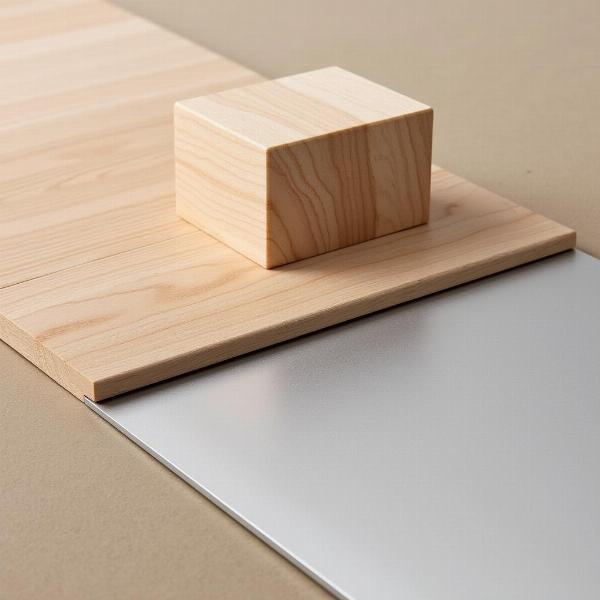Understanding the nuances of Hindi vocabulary is crucial for effective communication. The word “appose” is often encountered in English texts, and knowing its equivalent in Hindi can greatly enhance your understanding and ability to translate accurately. This article will delve into the various meanings of “appose” and their corresponding Hindi translations, along with examples to illustrate their usage.
Decoding “Appose” and Its Hindi Counterparts
“Appose” primarily means to place something close to or against something else. Depending on the context, this can refer to physical placement or juxtaposition of ideas. Let’s explore some common Hindi translations:
-
लगाना (Lagana): This is a versatile verb that generally means “to apply,” “to attach,” or “to place.” It’s a suitable translation for “appose” when referring to physical placement. For instance, “apposing two surfaces” could be translated as “दो सतहों को लगाना (do satahōṁ ko lagana).”
-
सटाना (Satana): This verb implies bringing two things into close contact, often with a sense of pressing or sticking them together. It’s a more specific translation for “appose” when the action involves close physical proximity. “Apposing the edges of the paper” could be translated as “कागज़ के किनारों को सटाना (kagaz ke kinārōṁ ko satana).”
-
जोड़ना (Jodna): Meaning “to join” or “to connect,” this verb works well when “appose” refers to bringing two separate elements together to form a whole. For example, “apposing two pieces of wood” could be translated as “लकड़ी के दो टुकड़ों को जोड़ना (lakdi ke do tukdoṁ ko jodna).”
-
मिलाना (Milana): This verb, meaning “to mix” or “to combine,” can be used when “appose” refers to blending or merging things together. For instance, “apposing different colors” can be translated as “अलग-अलग रंगों को मिलाना (alag-alag rangoṁ ko milana).”
 Apposing Two Surfaces
Apposing Two Surfaces
Apposing Ideas in Hindi
Beyond physical placement, “appose” can also describe the juxtaposition of ideas or concepts. In such cases, the following Hindi words can be used:
-
तुलना करना (Tulna karna): Meaning “to compare,” this phrase is appropriate when “appose” refers to presenting two ideas side-by-side for comparison. For example, “apposing two contrasting viewpoints” can be translated as “दो विपरीत दृष्टिकोणों की तुलना करना (do viparīt dr̥ṣṭikōṇōṁ kī tulnā karnā).”
-
विरोध करना (Virodh karna): Meaning “to oppose” or “to contradict,” this verb is used when “appose” suggests placing ideas in contrast to highlight their differences. “Apposing arguments” can be translated as “विरोधी तर्क (virōdhī tark).”
Practical Examples of “Appose” in Hindi
Let’s look at some practical examples to further clarify the usage of “appose” and its Hindi equivalents:
-
“The doctor apposed the bandage to the wound.” – “डॉक्टर ने घाव पर पट्टी लगाई (Doctor ne ghaav par patti lagai).”
-
“She apposed the two fabrics to check the color match.” – “उसने रंग मिलाने के लिए दो कपड़ों को सटाया (Usne rang milane ke liye do kapdoṁ ko sataya).”
-
“The artist apposed light and shadow to create a dramatic effect.” – “कलाकार ने नाटकीय प्रभाव पैदा करने के लिए प्रकाश और छाया का विरोध किया (Kalakar ne natakiya prabhav paida karne ke liye prakash aur chhaya ka virodh kiya).”
Conclusion: Mastering the Meaning of “Appose”
Understanding the different nuances of “appose” and its various Hindi translations can significantly improve your communication and translation skills. By considering the context and choosing the most appropriate Hindi equivalent, you can convey your message accurately and effectively. Remember to consider the physical or conceptual nature of the apposition when selecting the correct Hindi translation.
FAQ
-
What is the most common Hindi translation of “appose”? The most common translation is लगाना (Lagana).
-
When should I use सटाना (Satana) to translate “appose”? Use सटाना (Satana) when the action involves close physical contact or pressing two things together.
-
How do I translate “appose” when referring to ideas? Use तुलना करना (Tulna karna) for comparing ideas or विरोध करना (Virodh karna) for contrasting ideas.
-
Can you provide an example of “appose” used in a medical context? “The doctor apposed the bandage to the wound” translates to “डॉक्टर ने घाव पर पट्टी लगाई (Doctor ne ghaav par patti lagai).”
-
What is the difference between मिलाना (Milana) and जोड़ना (Jodna)? मिलाना (Milana) refers to mixing or blending, while जोड़ना (Jodna) means to join or connect two separate elements.
Meaning-Hindi.in is your one-stop solution for all your Hindi translation needs. We offer a wide range of professional translation services, including business and commercial document translation, certified and legal document translation, technical and user manual translation, website and localization translation, educational and academic document translation, and fast and urgent translation services. Our team of expert Hindi linguists ensures accurate and culturally sensitive translations for diverse clients. Contact us today for a free quote! Email: [email protected], Phone: +91 11-4502-7584. Let Meaning-Hindi.in bridge the language gap for you!